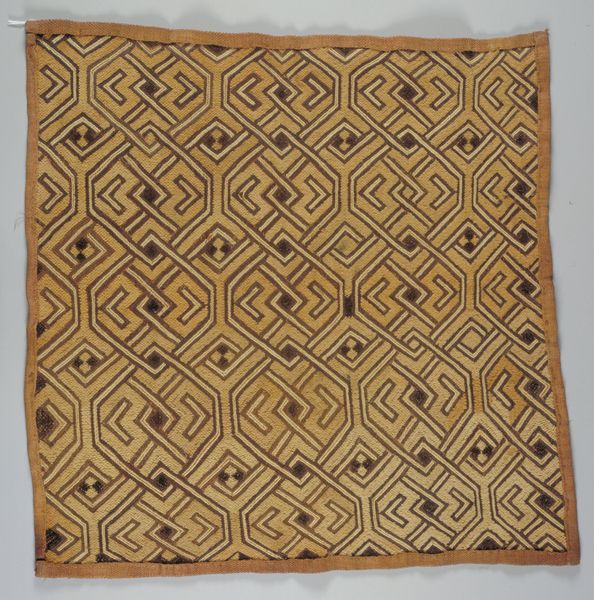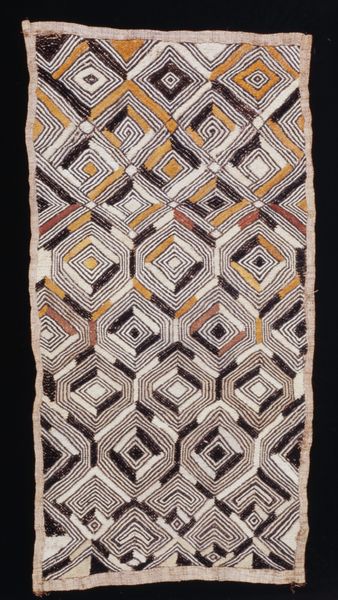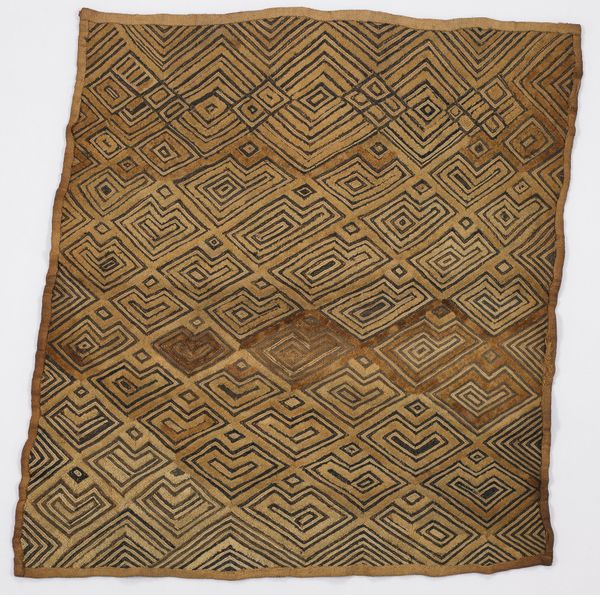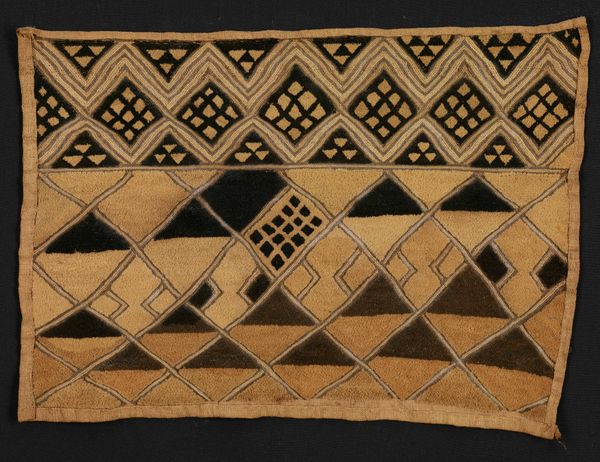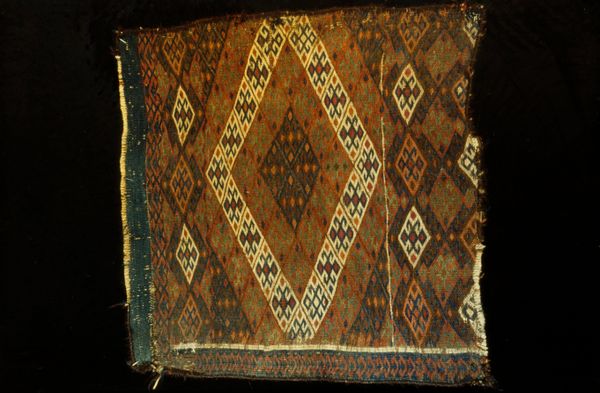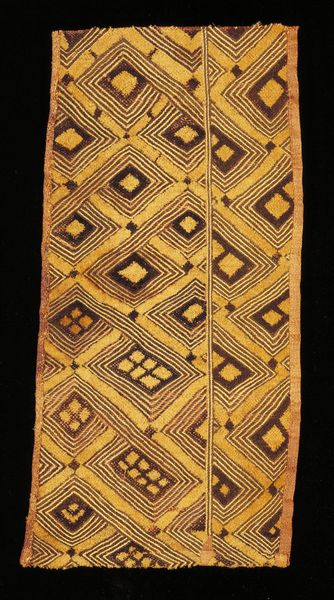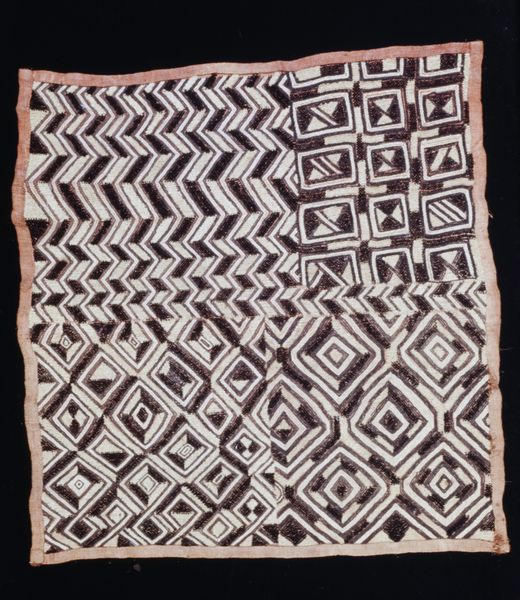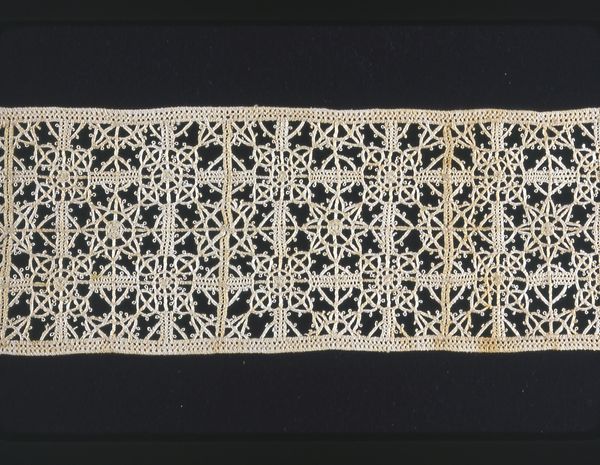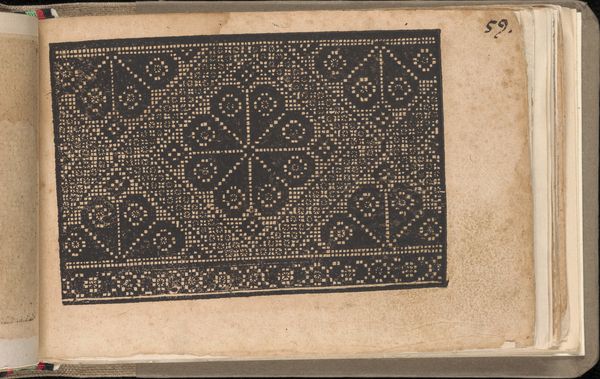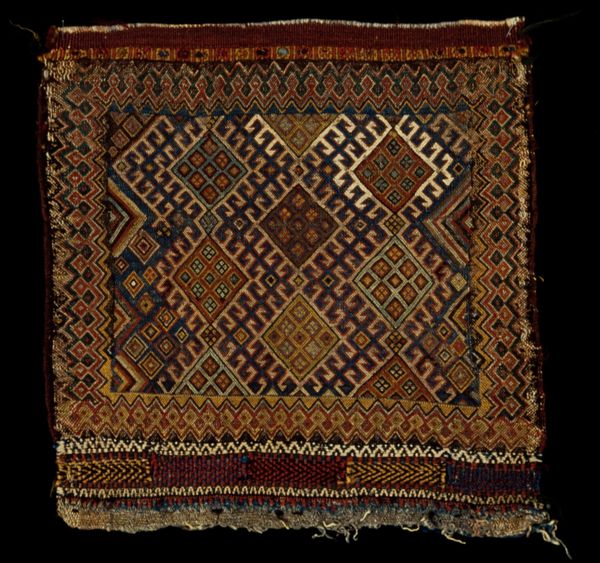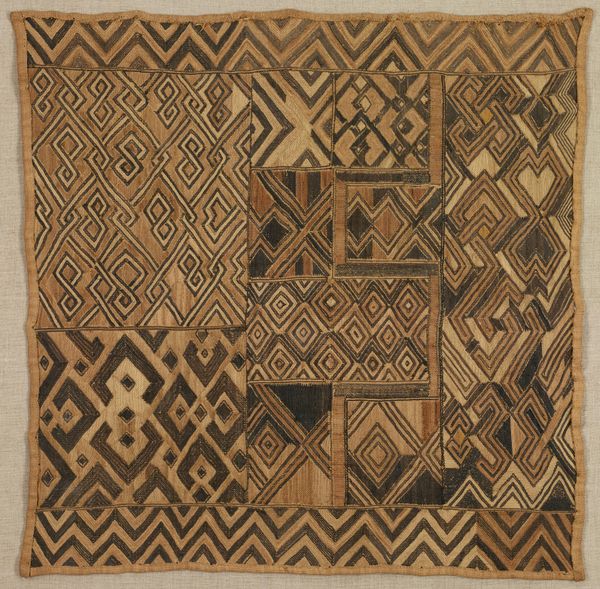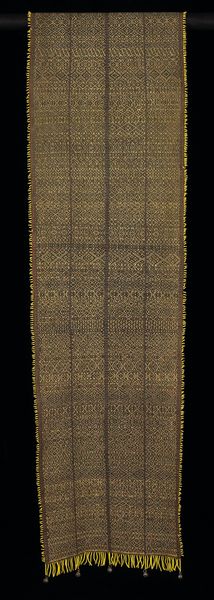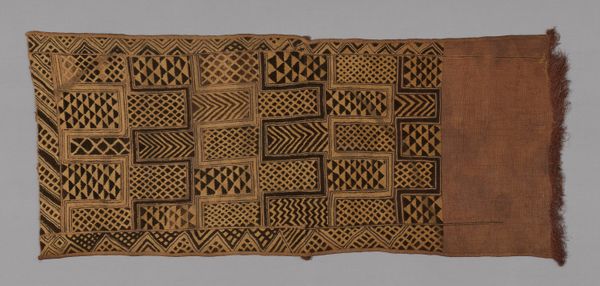
textile
#
african-art
#
textile
#
geometric pattern
#
geometric
Dimensions: 24 3/4 x 24 3/4 in. (62.87 x 62.9 cm)
Copyright: Public Domain
Editor: This striking textile panel, made by Kuba artists sometime in the 19th or 20th century, has an earthy, organic feel, despite the very strong geometric patterning. What do you see in this piece, particularly in terms of its cultural context? Curator: What I find particularly fascinating is how this piece pushes against the grain of Western art historical narratives. Often, we associate geometric abstraction with modernism, seeing it as a purely formal exercise. However, here, we have a complex geometric pattern deeply embedded in the social fabric of Kuba culture. Editor: Could you elaborate? Curator: These textiles were often used in ceremonies, or as status symbols. The geometric patterns aren’t just decorative; they communicate meaning, conveying information about lineage, social standing, and spiritual beliefs. How does this relate to today’s debates on cultural appropriation, in your opinion? Editor: That's an interesting point! Considering current discussions, the deep cultural meaning of the work can’t be ignored or used without proper consideration. Thinking about who made it and why really emphasizes its value and cultural heritage. It stops the object from being appreciated at face value. Curator: Precisely. And consider how this textile challenges the art/craft divide, a construct often used to marginalize the artistic contributions of women and non-Western cultures. The incredible skill and artistry on display demands a re-evaluation of these categories. I would also push us to consider how issues such as climate change intersect. It brings to question the ecological impact of textile production. Editor: Definitely something to think about. Looking at it this way makes me appreciate how art reflects global histories and challenges established power structures. Curator: Indeed. And that's how we create a more inclusive and critically informed understanding of art history.
Comments
No comments
Be the first to comment and join the conversation on the ultimate creative platform.
